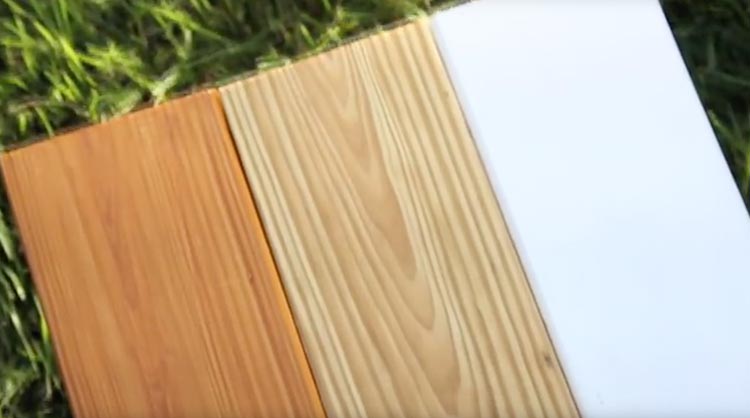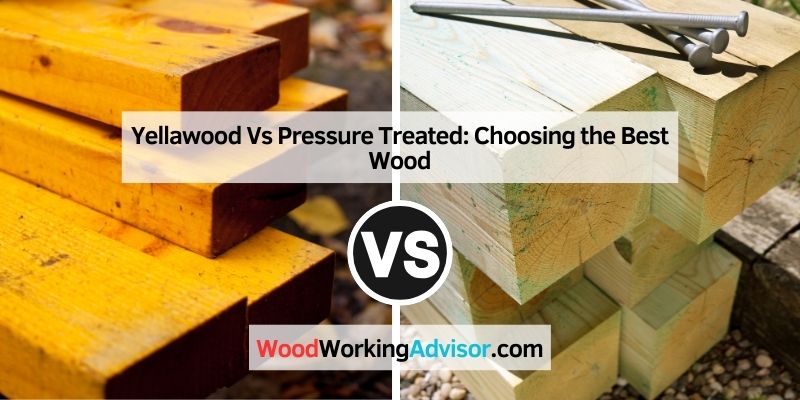Imagine stepping into your backyard, surrounded by the beauty and tranquility of your outdoor space. The choice of materials for your deck or fence can make all the difference in creating an environment that feels like an extension of your home.
You may be considering Yellawood and pressure-treated wood for your next project. Each option promises durability and protection, but which one truly suits your needs? By understanding these choices, you can make an informed decision that enhances your outdoor living experience.
Dive into this article to uncover the essential differences, benefits, and drawbacks of Yellawood versus pressure-treated wood. Discover how these options can transform your space and align with your lifestyle, ensuring you invest in materials that stand the test of time.
Yellawood Characteristics
Yellawood is known for its high durability. It lasts long under harsh conditions. Strong structure helps it resist wear and tear. It stands firm in bad weather. This wood is tough and reliable. Builders trust it for outdoor projects. Yellawood is less likely to rot. It keeps its shape well over time.
Yellawood looks good with its warm, natural color. It has a pleasant and smooth surface. This wood adds charm to gardens and decks. People admire its beauty. Yellawood blends well with nature. It gives a cozy feel to homes. Many choose it for its lovely appearance.
Yellawood is treated with chemicals. These help protect the wood from insects. Some worry about its impact on nature. It lasts long, reducing the need for replacements. This helps save trees. People debate its eco-friendliness. It’s important to weigh pros and cons.
Credit: www.reddit.com
Pressure Treated Wood Features
Pressure treated wood lasts longer. Special chemicals protect the wood. These chemicals keep bugs and rot away. The wood is placed in a big tank. Air is sucked out of the tank. Then, the chemicals are pushed deep into the wood. This makes the wood strong and safe. It is good for outdoor use. Fences and decks use this wood.
Some chemicals in pressure treated wood can be harmful. It’s important to wear gloves when handling the wood. Never burn this wood. Burning releases toxic fumes. Always wash hands after touching it. Use a mask when cutting the wood. This helps keep you safe from dust.
Pressure treated wood needs care. It can last many years with proper care. Check for cracks often. Seal the wood to protect it from water. This prevents swelling and shrinking. Clean the wood to remove dirt. This keeps it looking nice. Sand rough spots to avoid splinters.
Cost Comparison
Yellawood costs more at first. It is premium wood. People pay extra for quality. Pressure treated wood is cheaper. It is common and easy to find. Many choose it to save money. It is a budget-friendly choice.
Yellawood lasts longer. It stands up to weather better. Less maintenance is needed. Pressure treated wood needs care. It can rot or decay over time. More repairs mean spending more money. In the long run, Yellawood is worth it. It saves money over many years.

Applications And Suitability
Yellawood is great for decks and fences. It can handle rain and sun. Pressure-treated wood is also strong. It lasts a long time. Both choices can build gazebos and playhouses. They keep bugs away and stay strong. But Yellawood looks nicer. It has a warm color. Pressure-treated wood is often cheaper.
Yellawood is not good for inside. It has chemicals that smell. Pressure-treated wood is also not ideal for indoors. It can have harmful chemicals. Use it only in safe places like basements. Better choices are hardwood or pine for inside. They are safer for bedrooms and kitchens. Always check safety rules.
Pros And Cons
Yellawood is known for its bright color. It gives a fresh look. This wood is treated to last longer. It resists rot and bugs. But it’s pricier than other woods. The treatment can fade over time. This might need extra care or re-treatment. Yellawood also has a distinctive smell. Some people like it, some don’t.
Pressure treated wood is very strong. It can last many years. This wood is a cost-effective choice. It fights against rot and insects. Some people think it looks less natural. The chemicals used for treatment might be harmful. It needs special handling and care. Proper sealing is required to maintain its look.

Credit: www.yellawood.com
Environmental And Health Considerations
Yellawood and pressure-treated wood each have different sustainability factors. Yellawood uses less harmful chemicals. This makes it better for the environment. Less chemical use means fewer pollutants. It helps keep the air and water clean. Pressure-treated wood often uses more chemicals. This can be harder on nature. Choosing the right wood can help protect our planet.
Both wood types use chemicals to stay strong. Yellawood uses safer chemicals. This makes it safer for people and pets. Less chemical smell means it is better for health. Pressure-treated wood uses stronger chemicals. These can be harmful if touched or inhaled. Always use gloves when handling treated wood. Safety is very important for everyone.
Making The Right Choice
Building a deck or fence? You’ll want strong and lasting wood. Yellawood is treated for outdoor use. It resists bugs and rot. Pressure treated wood is also a good option. It’s known for its durability. Both types offer protection. Think about the climate. Wet areas need more protection. Choose the right wood for your area.
Some people like the look of Yellawood. It has a yellow tint. Others prefer the traditional look of pressure treated wood. Consider how the wood will age. Do you want a natural gray look? Or a bright, fresh appearance? Your choice can match your style. Always think about maintenance. Some woods need more care. Pick what fits your lifestyle.

Credit: www.vintagewoodworks.com
Frequently Asked Questions
Why Is Yellawood Better?
YellaWood offers superior pressure-treated lumber with long-lasting protection against rot, decay, and termites. It ensures durability and reliability for outdoor projects. Quality control and rigorous standards make YellaWood a trusted choice for builders and homeowners. Its distinctive yellow end-tag guarantees authentic YellaWood products, ensuring performance and satisfaction.
Is Yellawood Pressure Treated?
Yes, YellaWood is pressure treated. It undergoes a process to protect against decay and termites. This treatment ensures long-lasting durability for outdoor use, making it suitable for decks, fences, and other outdoor structures. Always follow safety guidelines when handling pressure-treated wood.
Is Pressure Treated Or Kiln Dried Better?
Pressure treated wood resists decay and insects, ideal for outdoor projects. Kiln dried wood is stable, reducing moisture-related issues, perfect for indoor use. Choose based on your project needs.
What Is Better Than Pressure-treated Wood?
Cedar or redwood is often better than pressure-treated wood. They resist decay and insects naturally. Composite decking is also a great alternative. It offers durability, low maintenance, and a variety of styles. These options provide long-lasting beauty and environmental benefits over traditional pressure-treated wood.
Conclusion
Choosing between YellaWood and pressure-treated wood depends on your needs. YellaWood offers quality and durability. Pressure-treated wood is affordable and widely available. Consider your project and budget when deciding. For outdoor projects, both options protect against rot and insects. YellaWood may offer more consistent quality.
Pressure-treated wood remains a popular choice for budget-friendly projects. Weigh the pros and cons of each. Make an informed decision. Your project will thank you. Choose wisely for the best results.

